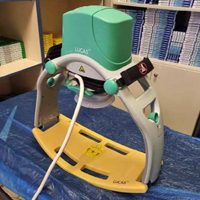 Smart Citations
Smart CitationsSee how this article has been cited at scite.ai
scite shows how a scientific paper has been cited by providing the context of the citation, a classification describing whether it supports, mentions, or contrasts the cited claim, and a label indicating in which section the citation was made.
The role of automated compression devices in out-of- and in- hospital cardiac arrest. Can we spare rescuers’ hands?
Research regarding the use of mechanical compressions in the setting of a cardiac arrest, either outside of or inside the hospital environment has produced mixed results. The debate whether they can replace manual compressions still remains. The aim of this review is to present current literature contemplating the application of mechanical compressions in both settings, data comparing them to manual compressions as well as current guidelines regarding their implementation in everyday clinical use. Currently, their implementation in the resuscitation protocol seems to benefit the victims of an in-hospital cardiac arrest rather than the victims that sustain a cardiac arrest outside of the hospital.
Downloads
How to Cite
PAGEPress has chosen to apply the Creative Commons Attribution NonCommercial 4.0 International License (CC BY-NC 4.0) to all manuscripts to be published.

 https://doi.org/10.4081/ecj.2021.9525
https://doi.org/10.4081/ecj.2021.9525





